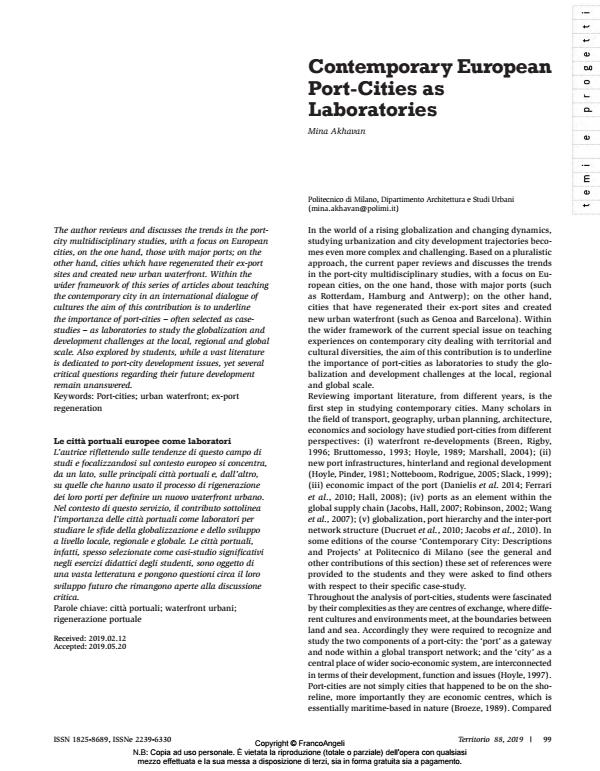Contemporary European Port-Cities as Laboratories
Journal title TERRITORIO
Author/s Mina Akhavan
Publishing Year 2019 Issue 2019/88
Language English Pages 6 P. 99-104 File size 374 KB
DOI 10.3280/TR2019-088015
DOI is like a bar code for intellectual property: to have more infomation
click here
Below, you can see the article first page
If you want to buy this article in PDF format, you can do it, following the instructions to buy download credits

FrancoAngeli is member of Publishers International Linking Association, Inc (PILA), a not-for-profit association which run the CrossRef service enabling links to and from online scholarly content.
The author reviews and discusses the trends in the portcity multidisciplinary studies, with a focus on European cities, on the one hand, those with major ports; on the other hand, cities which have regenerated their ex-port sites and created new urban waterfront. Within the wider framework of this series of articles about teaching the contemporary city in an international dialogue of cultures the aim of this contribution is to underline the importance of port-cities - often selected as casestudies - as laboratories to study the globalization and development challenges at the local, regional and global scale. Also explored by students, while a vast literature is dedicated to port-city development issues, yet several critical questions regarding their future development remain unanswered.
Keywords: Port-cities; urban waterfront; ex-port regeneration
- Port Geography and Hinterland Development Dynamics Mina Akhavan, pp.11 (ISBN:978-3-030-52577-4)
Mina Akhavan, Contemporary European Port-Cities as Laboratories in "TERRITORIO" 88/2019, pp 99-104, DOI: 10.3280/TR2019-088015